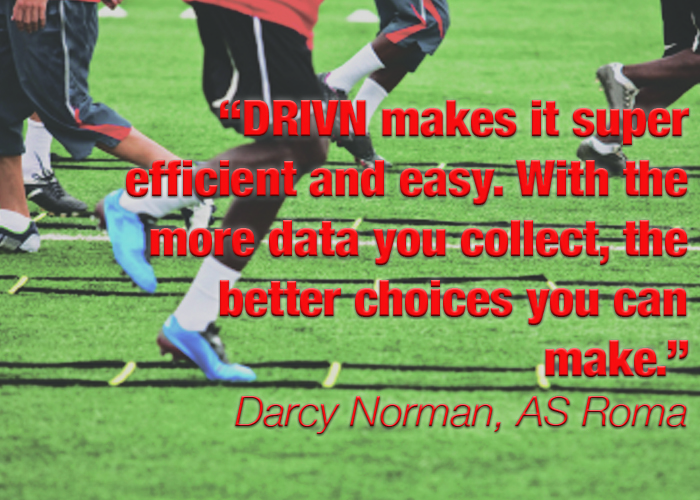{{cta(‘a44ae1e7-de66-4a0a-8b91-6f6ca8a727e3’)}}
One of the best questions you can ever ask is “Are there any questions I didn’t ask that I should have?” After all, you want to be sure you get all the information you need, right?
Asking questions is an art form and an essential part of problem-solving, which as you surely know is one of a coach’s most important jobs.
And as you know, there is an abundance of problems that need solving, especially when it comes to player management. Many times, however, a coach will rely on an educated guess to solve the problem. Coaches will draw on years of experience to recognize symptoms and then settle on a solution. But the most educated guess is still just a guess, isn’t it?
So maybe it’s time to stop guessing.
“People make choices based on what they know, and if they don’t have all the information, they can’t make the best choices,” says Darcy Norman, AS Roma’s Director of Performance and a DRIVN user. “Collecting data helps you make a more informed decision.
 “Data allows you to ask better, more informed questions. All that allows you to get to the root of the issue.”
“Data allows you to ask better, more informed questions. All that allows you to get to the root of the issue.”
Answers to specific problems require specific information, and it’s essential that you are asking the right questions in order to get the data you need to solve the problem.
“What you should collect should depend on what you want to know, and it can be anything,” says Norman. “An example is self-evaluation of the player so you get a sense of where they think they are at. You have your opinion of where they are at. Between those two pieces you can see if both groups are on track.”
Norman has found the perfect tool that not only makes it easy to collect the necessary data but also displays it in helpful formats.
“With the trackers and the data sheets in DRIVN, you have that data in one place that you can always reference,” he says. “You can look at that data and refer to it any time to you have an issue.
“DRIVN makes is super-efficient and easy. With the more data you collect, the better choices you can make. You get more insight into the total picture. Once you get one piece of data, then you are using other pieces of data against that data to help you differentially diagnose what the limitation is so you can address it.”